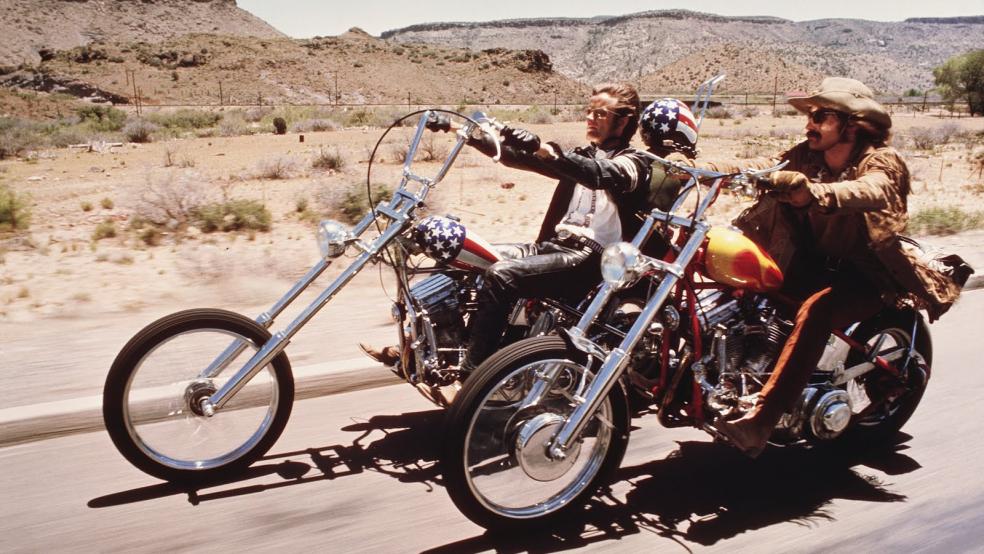If you want a Harley, dude, you’re still going to have to pay close to full freight.
In keeping with the American rebel image it has nurtured for decades, Harley-Davidson (HOG) has taken an in-your-face stance when it comes to confronting declining market share and the steep discounting of its rivals.
During its recent earnings call, Chief Financial Officer John Olin said that the iconic motorcycle company isn’t missing any sleep over fluctuations in market share because its lost share in previous years only to gain in back.
Related: Tesla’s New Battery Can Be a Game Changer for Global Energy
“We're not going to jump in and respond to price discounting by discounting on our great brand,” he said. “We're managing this for the long-term value of the brand and the company, and sucking industry profits out of it by lowering margin and selling non-full margin product is not the way to do it.”
Still, the deals Olin is referring to are pretty sweet. According to Harley, rivals have been offering discounts of as much as $3,000 per bike, an increase from $2,000 per bike in the fourth quarter of 2014. Manufacturer Suggested Retail Prices can wind up being cut by as much as 25 percent, according to Harley and Cycle World magazine.
There is no question that Japanese makers such as Yamaha, Honda Motor, Suzuki and Kawasaki have made inroads into the lower end of the U.S. motorcycle market. Suzuki even quit selling cars in the U.S. in 2012 to focus on motorcycles. The higher end is also getting more crowded. Indian, a brand with cachet among the two-wheel crowd, was resurrected a few years ago by Polaris Industries (PII) after being dormant for decades. Other premium brands such as Germany’s BMW and Italy’s Ducati reported record cycle sales in 2014. And U.K.-based Triumph has seen increased U.S. sales in recent years.
Harley, though, dominates the market for heavyweight motorcycles with engines of 601 cubic centimeters: It had a 51.3 percent share in the first quarter, down 4.7 percent from a year earlier. The size of the decline surprised the company, according to Olin.
Not everyone is happy that Harley is dissing discounts, especially given its recent mixed quarterly results. The Milwaukee-based company beat analysts’ profit expectations but missed their revenue forecasts. Harley unnerved investors further when it slashed its forecast for growth in 2015 motorcycle shipments to an increase of 2 percent to 4 percent vs. earlier forecasts of a 4 percent to 6 percent gain. The company expects to deliver 83,000 to 88,000 bikes in the current quarter, a decrease of 5 to 10 percent from last year’s second quarter.
Related: The 4 Dangers of Self-Driving Vehicles
At least three analysts lowered their price target on Harley after the report, though they didn’t cut their ratings. Others, such as Sharon Zackfia of William Blair & Co., noted that the motorcycle maker’s strategy comes with risks.
“Harley does not plan to discount, which could lead to continued share erosion over the next few quarters,” Zackfia wrote in a note to clients. Still, she said, the company has begun some promotional financing aimed at young riders, with payments of as little as $99 a month, and low rates for core customers, with rates as low as 1.99%. Zackfia rated the shares, which have slumped nearly 14 percent this year, as “outperform.” On May 1, Harley was trading around 66.65 a share, down from its 52-week high of 75.04.
One reason for the continued optimism is that none of Harley’s challengers have the status of the “Hog” as an American icon celebrated in film and pop culture. A site that tracks customer loyalty even “certified” Harley as a “cult brand” because of its longevity, among other reasons. The company describes its “core customers” as Caucasian men aged 35 and older, but it is broadening its appeal to women, African-Americans and Latinos.
Related: Car Sales Are on Pace to Do Something They Haven’t in 50 Years
The numbers for motorcycles sales in America don’t lie, and Harley remains the 800-pound hog in the market.
During the fourth quarter of 2014, Harley sold 26,957 motorcycles in the U.S. Honda Motor, its biggest competitor, sold 10,343 bike in fiscal the U.S. during the same period.
“Harley has been selling bikes hand-over-fist for the past 20 years,” said Mark Tuttle, editor-in-chief at Rider Magazine, in an interview. “(These) riders don’t want a lot of change. They want the bikes to keep their traditional look.”
Thumbing your nose at discounting is a strategy that takes guts, but if Harley were to get into that game and make its bikes more affordable, it might lose some of the mystique that has it king of the road.
Top Reads from The Fiscal Times:

